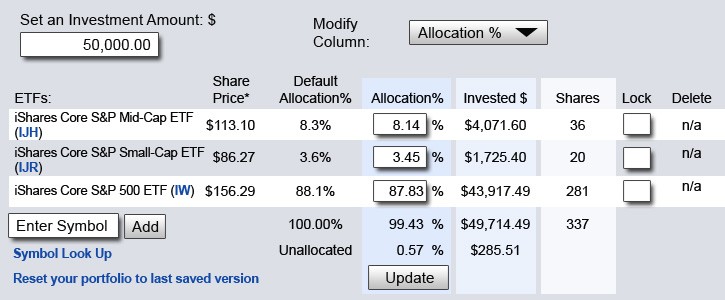How to use ETFs in your portfolio
Post on: 7 Апрель, 2015 No Comment

ETFs are ideal for the following strategies:
This strategy is applicable to a portfolio that holds one asset class, for example equities. While the benefits of investing in passive products are well documented, investors may be willing to assume more risk from time to time in an attempt to achieve a return in excess of what the index offers. This can be achieved by allocating the majority of a portfolio to an ETF, with the balance being allocated to a manager that specializes in achieving returns that are not correlated to the index (‘alpha’). These alpha portions of a portfolio can take the form of actively managed equities, hedge funds or private equity. The overall effect of a portfolio structured in this fashion, is that it is possible to achieve returns in excess of the index, but with dramatically reduced costs due to the ETF component.
Using ETFs as building blocks is typical of multi asset class portfolios. Here, investors are able to actively manage the asset allocation of their portfolios by purchasing ETFs that give exposure to the appropriate asset class. For example, if an investor wanted exposure to equities, bonds and property, it is possible to purchase an ETF in each one of these asset classes and to change the allocation according to market conditions. Again, this is a low cost portfolio construction tool that is used by many asset managers. Investment professionals can offer valuable advice of the optimal mix of assets in a portfolio.
Short sales are an effective method of profiting from a declining market. Up to now, this has been achieved by selling futures, with the associated negative cash-flow in the form of initial margin. Now managers are using ETFs to gain this exposure, as the sale of ETF units raises cash that can be applied to other trading strategies. The short selling of ETFs is becoming a very popular method of raising cash.
Pairs trading is typically used when an investor wishes to gain exposure to the difference in price movements between two securities i.e. when an investor believes that one security will perform better than another. This is achieved by selling (short) the underperforming security and buying the security that is anticipated to perform well. As ETFs generally represent market indices, a pair’s trade with an ETF can be used to gain access to the price performance of a share relative to the market. This is achieved by shorting the ETF and buying the individual share, which has the effect of removing the ‘beta’ from the performance in the share price. While this strategy does, to a large extent, remove market risk from a portfolio, it may also involve a fair degree of other risks.














